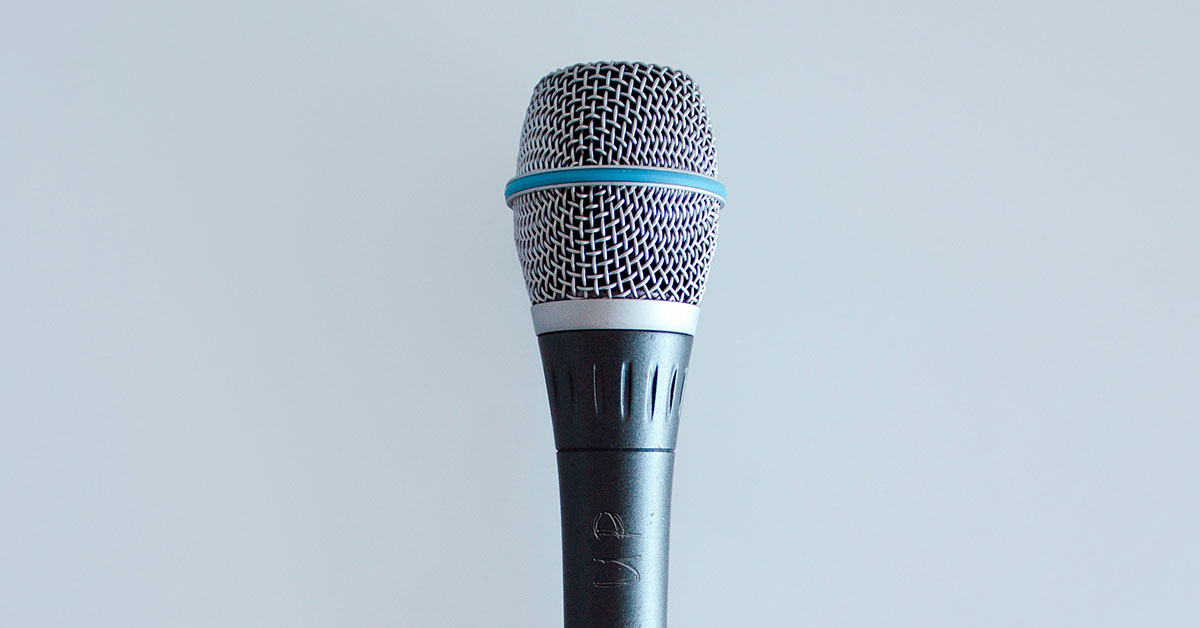Regardless of your day-to-day role, it’s worth taking the time to improve your public speaking skills. While you may not think you do a lot of public speaking, the truth is we all need the ability to communicate our ideas effectively.
At one of our Think Club events Ryan Lewty, one of our expert facilitators, walked us through the science behind public speaking.
We covered a variety of techniques and tweaks you can use to capture your audience’s attention, keep them interested and engage their brains throughout your presentation. Want to find out what they are? Read on.
How to improve your public speaking with science.
#1: Give people a reason to listen
If you immediately swing into educator mode, you may find that your audience is less engaged and receptive to what you are saying. That’s because their brains are still trying to answer three important questions that we’re biologically wired to be curious about.
The three questions are – what are you going to share with us, why are you the person sharing it with us, and most importantly, what’s in it for me?
You can answer these questions subtly in the first 3-4 minutes of your presentation by storytelling or by getting someone to introduce you if you’re going up on stage.
When these three questions are answered your audience will be much more receptive to what you’re going to share.
#2: Top and tail
When someone reads out a phone number to you, all in one go, do you find yourself only remembering the first or last couple of numbers? That’s due to the primacy and recency effects that plague us as human beings.
It’s much easier to remember the first thing you hear and the last thing you hear when someone speaks, so make sure to mention your key points in the beginning and end of your presentation.
This will help your points to really get across to the audience.
#3: Use visuals
If you were to walk into a room and begin speaking to 5 or more strangers, do you think you’d be able to tell what kind of learners they are? Unless you’re Michael Grinder, the world-renowned expert on non-verbal communication, you’re probably not going to get it right.
This is why it’s important to use visual aids in your presentations to make sure that everybody from the auditory learners to the visual learners can learn from you. Bonus points if you add in activities to engage the kinaesthetic learners in the crowd.
#4: Harness connection
Really want to make sure your audience remember what you’ve shared? Use the power of social connection to make that happen.
Throughout your presentation give your audience the opportunity to share what they’ve learned with another person or better yet, give them the chance to put what they’ve learned into action with a group.
By speaking with others about the subject matter we process the information on a deeper level and are more likely to remember it.
#5: Try brain breaks
If you’ve got a long meeting or a team development day with lots of speakers involved, it’s worth having a couple of ‘brain breaks’ in between.
The best brain breaks are the ones that make people have a laugh as it relaxes the brain and will make your audience more receptive to the situation.
You can easily Google ‘corporate brain breaks’ for inspiration if you need it, otherwise, have a chat to our Science of Recovery expert Ryan about it.
Three things that’ll help you deliver your message powerfully.
#1: Posture
What’s your posture like right now, as you’re reading this article? Are your shoulders slumped over a little with your neck angled downwards…got a bit of back pain?
One of the reasons why our posture is so important is that our heads are around the same weight as an average bowling ball. No wonder your neck hurts if you sleep on the wrong kinda pillow, hey?
Having good posture when delivering a talk will make you appear more confident and help you to give off a professional presence.
A simple trick you can do to get your posture right when standing is to pretend you’ve got a 20c coin between your cheeks.
Not your face cheeks, we’re talking about your rear end here. #sorrynotsorry
Get up now and try it for yourself. Y’know, as long as you’re not on the bus or something.
#2: Breathing
Something that Ryan bangs on about a lot in the Pragmatic Thinking office is the importance of breathing correctly. And honestly, we see why every time we do this simple exercise.
Take a deep breath for four seconds, hold it for one second, and then breathe out for four seconds. Repeat these steps three or four times.
Do you feel relaxed? You should. This is a simple technique you can use before getting up to present to keep your cortisol levels low and to stay calm.
By breathing properly throughout your presentation you’ll speak clearly and will be able to project your voice much easier.
#3: Use Your Hands
What do you do with your hands when you’re speaking? Do you tend to keep them down by your side like a stiff board or do you find yourself flailing them around like you’re at a rave?
In a public speaking situation, one of the most impactful things you can do is to use your hands mindfully. By speaking and gesturing with your palms towards the ceiling (palms up) you’ll appear to be more approachable, friendly and open.
On the other hand, if you need to be seen as authoritative or credible, speak and gesture with your palms down.
Surprisingly, the way you use your hands will impact the way you speak too. When you speak with your palms up your sentences will naturally finish on an upward inflexion. This creates that approachable, bouncy voice pattern that we use when meeting someone for the first time.
When speaking with your palms down you’ll find that your sentences finish on a downwards inflexion, that will help you to sound more directive and in charge.
Are you ready to go out there and communicate like a boss? With these science-backed tips in your back pocket, we know you’re going to go out there and rock the boardroom like never before.


